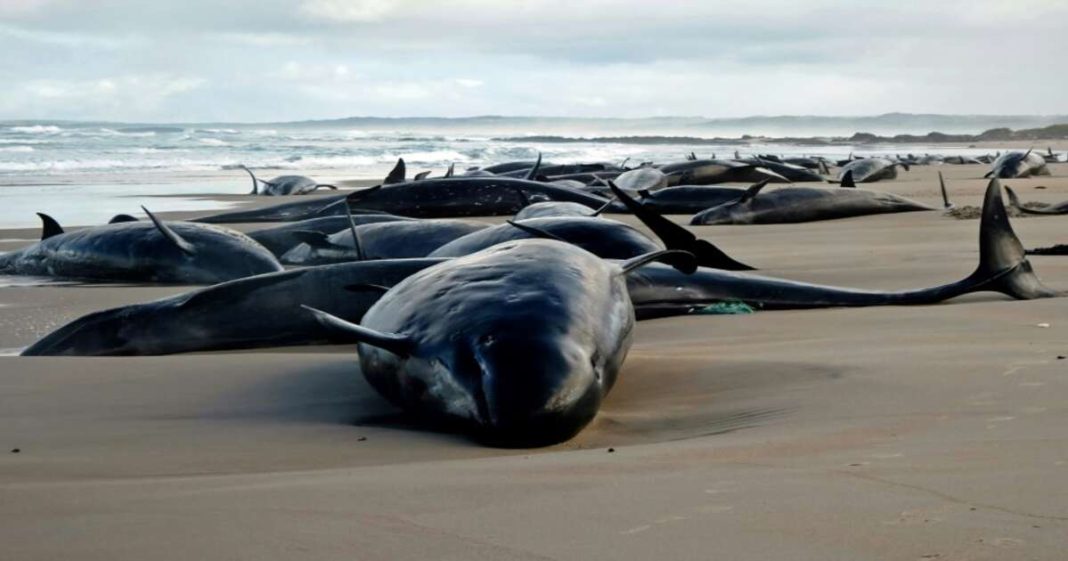A pod of 157 dolphins, believed to be false killer whales, was discovered stranded on a remote beach near the Arthur River inlet on the west coast of Tasmania. The event, which unfolded over 48 hours, prompted immediate response efforts from wildlife officials and veterinarians. False killer whales, a deep-sea species named for the orca-like shape of their skulls, are highly social and often travel in pods of 50 or more.
Mass strandings of false killer whales are not uncommon in Australia, but experts noted that this was the first such event in that particular area of Tasmania in 50 years. The reasons behind the stranding remain unclear, with marine scientists hoping that post-mortem examinations might provide insight into what caused the dolphins to beach themselves.
Difficult Rescue Operation in Remote Terrain
Tasmania’s environment department described the stranding response as particularly challenging due to the site’s remoteness and harsh conditions, including strong ocean currents and limited accessibility. The size of the dolphins, which can grow up to six meters (20 feet) in length and weigh more than a tonne, made rescue efforts even more complicated.
Read More: Dancing turtles reveal secret map-making skills
Rescue teams, including veterinarians and marine specialists, worked tirelessly to assess the situation and attempt to refloat the surviving dolphins. However, wildlife officer Brendon Clark noted that given the difficult conditions, many of the stranded dolphins were unlikely to be successfully returned to open water.
Rising Death Toll and Last-Resort Measures
As of Wednesday morning, 21 dolphins had already died, with approximately 136 still alive. However, by the following afternoon, the number of survivors had dropped to 90 as exposure to the sun and strong winds took a toll on the stranded animals. Experts noted that false killer whales have strong social bonds, which can lead entire pods to strand when just one member becomes disoriented.
With no viable options left, authorities made the difficult decision to euthanize the remaining 90 dolphins to prevent further suffering. “Following expert veterinary assessment, we have made the decision to euthanize the animals,” incident controller Shelley Graham confirmed, explaining that the prolonged exposure had left them increasingly stressed and in distress.
Mystery Behind Mass Strandings
Despite extensive research, scientists still do not fully understand why whales and dolphins strand in large numbers. Some theories suggest that navigational errors, illness, environmental changes, or sonar disturbances could contribute to such events. Tasmania has been identified as a hotspot for mass strandings, but the geographical and ecological factors behind this pattern remain unclear.
Marine scientist Vanessa Pirotta emphasized the urgency of response efforts in such situations: “The moment a whale or dolphin strands, the clock of survival starts ticking.” In cases like this, the remote location and logistical challenges severely limit the chances of a successful rescue.
Read More: Oldest modern bird fossil found in Antarctica sheds light on avian …
False killer whales are listed as “near threatened” by the Australian government, with no reliable estimates of their global population. Mass strandings pose a significant threat to the species, sometimes wiping out entire schools of dolphins at once. While rescue teams did their best to intervene, the tragic outcome highlights the ongoing challenges of marine conservation and the need for further research to prevent similar events in the future.














